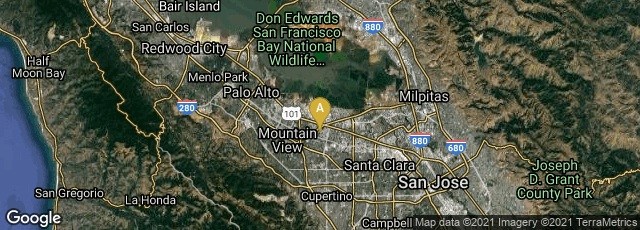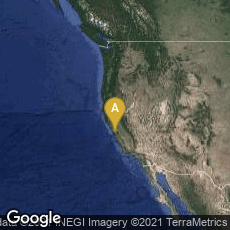

A: Mountain View, California, United States
Google announced the Living Stories project, which provided a new, experimental way to consume news, developed by a partnership between Google, the New York Times, and the Washington Post. The experiment ended in after only a short time, in February 2010. The purpose behind the project was an attempt to experiment by breaking from a traditional interface of just one article about one story by innovatively combining multiple articles about a "living story" that is ongoing and that continues to develop while implementing them under a unique URL interface. After the initial experimental period, Google released the software for Living Stories to the public on February 17, 2010, as open source code.
"The announcement of the 'living stories' project shows Google collaborating with newspapers at a time when some major publishers have characterized the company as a threat. Google has also taken steps recently to project an image of itself as a friend to the industry.
"Living stories is a much-enhanced version of what some newspaper Web sites already do by grouping material by subject matter. In the case of The Times, the paper’s Web site has thousands of “topic pages.” But those efforts have not yielded heavy reader traffic or much advertising.
"The Google project, presented without ads, is now at livingstories.googlelabs.com, part of Google Labs, where the company tries out experimental products. If it is judged a success, it would eventually reside on the site of any publisher that wanted to use it. Those publishers could also sell ads on those pages.
"Google’s dominant search engine sells ads alongside search results that often include news articles, leading some newspaper industry leaders — particularly executives of the News Corporation, led by Rupert Murdoch — to cry foul. Other publishers say that, on the contrary, they owe much of their Internet traffic and revenue to search engines.
"Google executives argue that the tools their company has developed, including search, make them the papers’ ally, a case made by Eric E. Schmidt, Google’s chairman and chief executive, in an opinion piece published last week in The Wall Street Journal. Also last week, Google announced changes in the way its search function interacts with news sites, giving publishers more flexibility in limiting the material readers can see before encountering demands for payment or registration. The changes were relatively minor, but reinforced the message that the company wanted to help news sites.
" 'There’s been a series of steps to work with and mollify news publishers, to improve the P.R., and you can see the living page in that same vein,' said Ken Doctor, a media analyst with the analysis firm Outsell. The project is a genuine step forward, he said, because 'on most news sites, site search, looking for a lot on one subject, is awful.'
"Google worked for months on the project with journalists and Web staffs at The Times and The Post. For now, it covers just eight broad topics, like health care reform and the Washington Redskins. At the top of each subject page is a summary, a timeline of major events and pictures, followed by the opening sections of a series of articles, in reverse chronological order. A set of buttons allows the reader to narrow the topic. 'It’s an experiment with a different way of telling stories,' said Martin A. Nisenholtz, senior vice president for digital operations of The New York Times Company. 'I think in it, you can see the germ of something quite interesting.'
"A reader can call up an entire article without navigating away from the subject page, reading one piece after another without using the 'forward' and 'back' buttons. Josh Cohen, business product manager for Google News, said that having all the material appear on a single page would help the page rank higher in Internet searches than newspapers’ subject pages do now.
"In various ways, the experiment duplicates or improves on what can now be done on publishers’ own sites, through a search engine’s news function or even on Wikipedia. Mr. Cohen said that if it worked well, Google would make the software available free to publishers, much as those publishers now use Google Maps and YouTube functions on their sites" (http://www.nytimes.com/2009/12/09/technology/companies/09google.html?hpw).
"Living Stories does pose a problem for the revenue model of newspapers. As it doesn't redirect traffic back to the original newspaper articles, and makes its content freely accessible to its readers, publishers lose support for advertisers and produce content with no return on investment. However, publishers could potentially post advertisements alongside the articles, following the shared revenue model elaborated by Google Fast Flip." (Wikipedia article on Living Stories, accessed 10-2020)